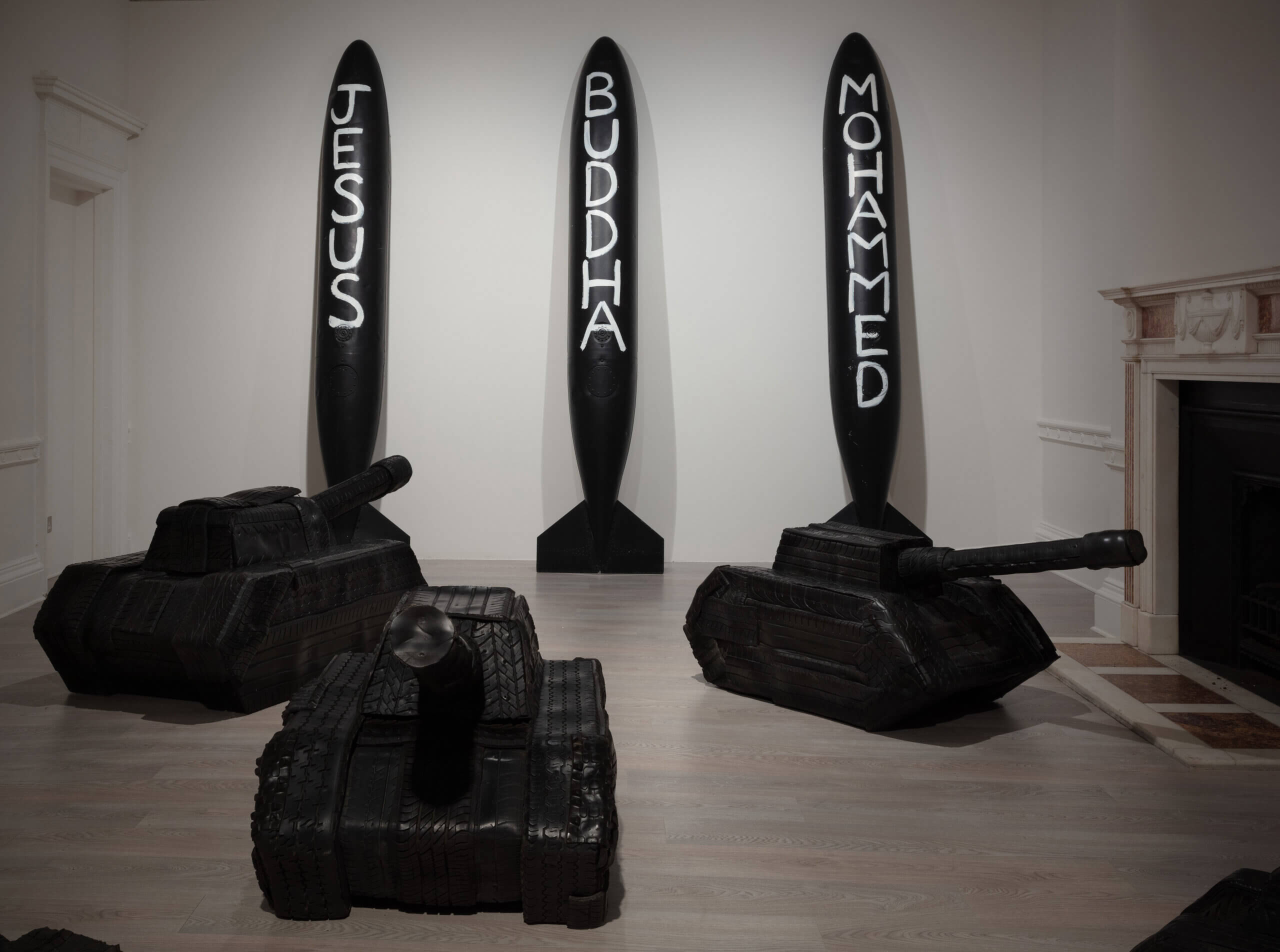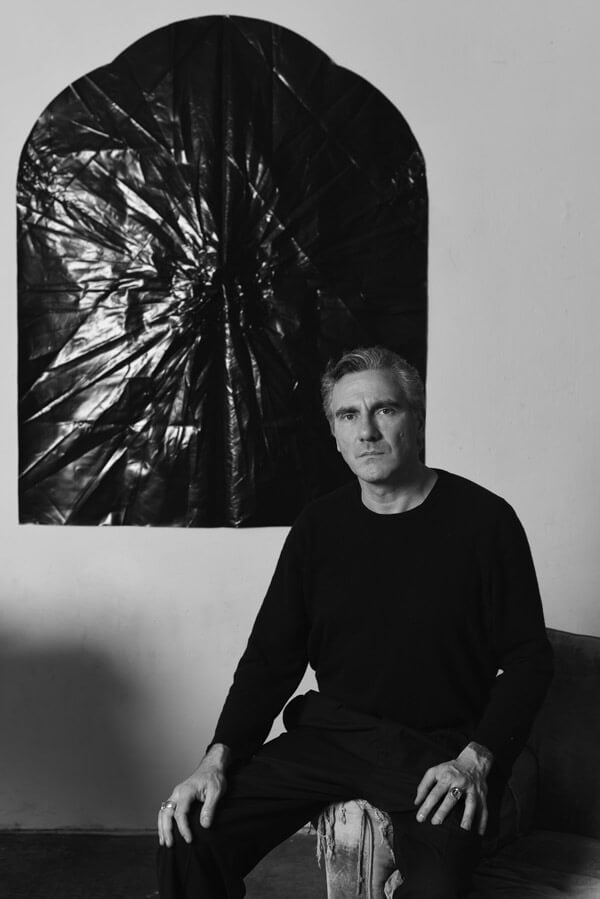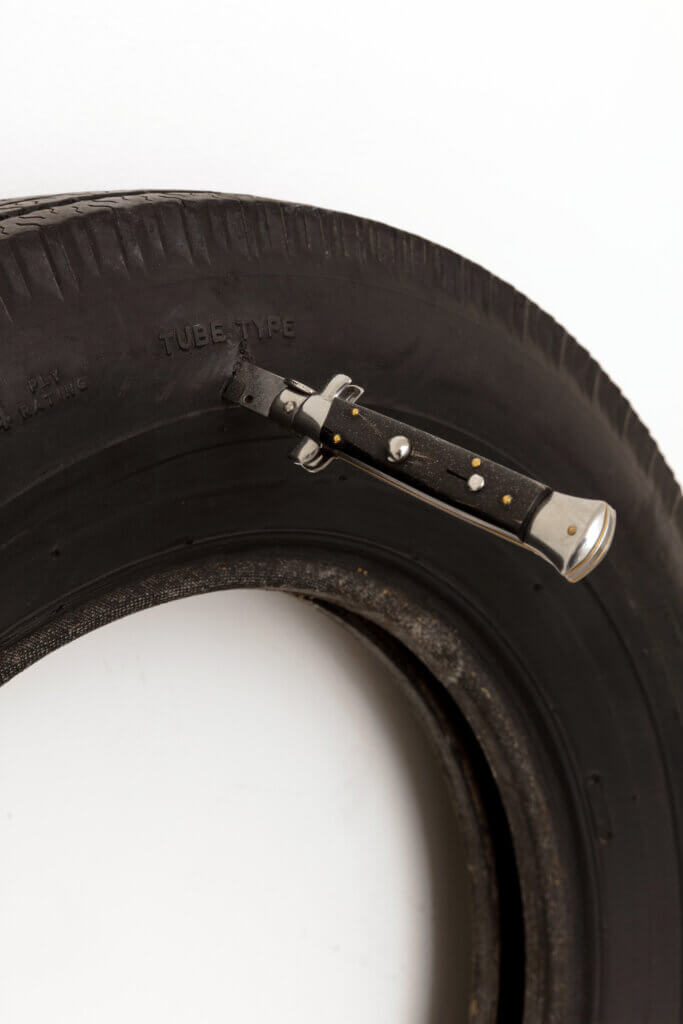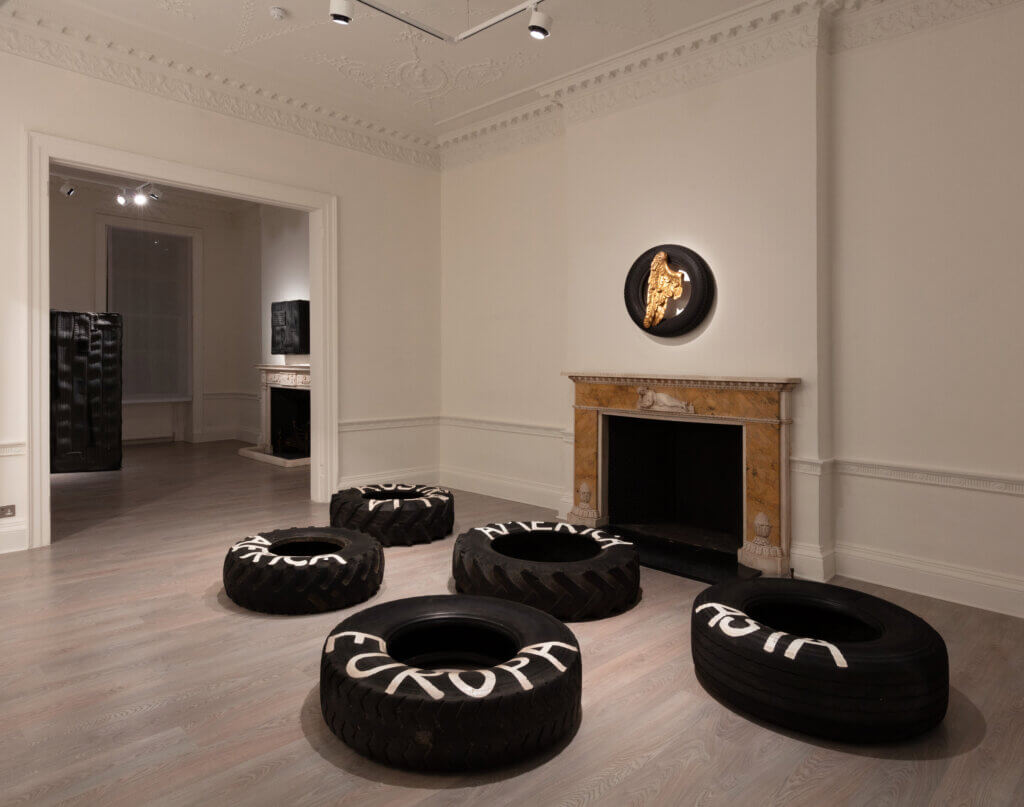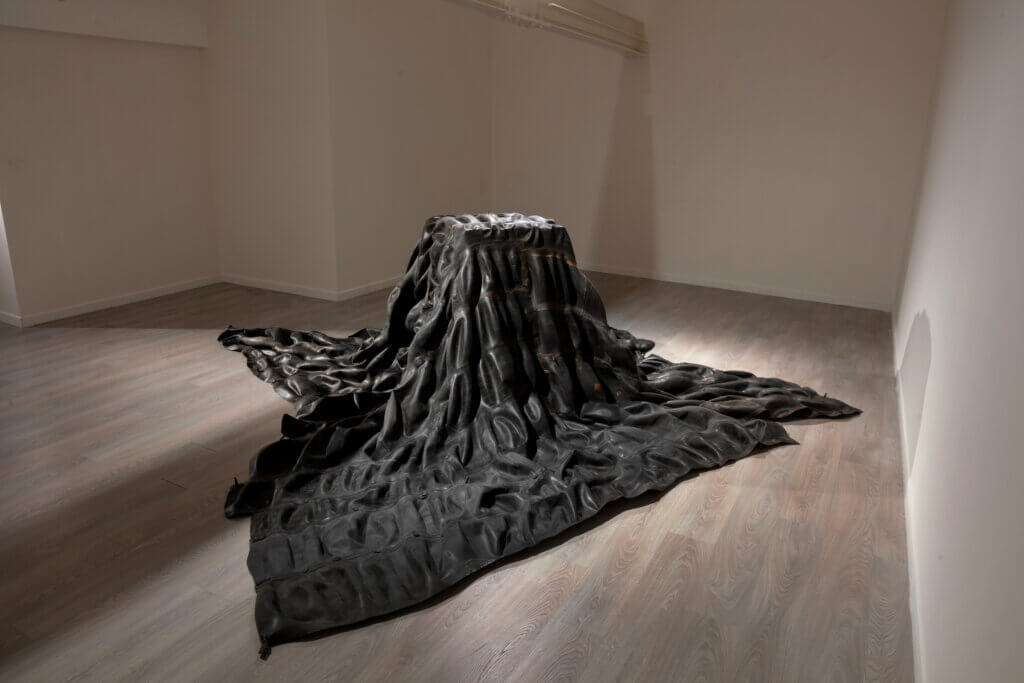Italian artist Paolo Canevari is recognised for his immense manipulation of industrial materials and his critique of rubber. His work focuses on the overthrow of the hierarchy, challenging the mundane ideas surrounding social, political and religious beliefs.
Inspired by the desire for truth and the eternal impact of art, he constructs this eye-opening yet potent dialogue. Rendering inner tubes and tyres into significant symbols of tanks and missiles in a brutal aesthetic. Signifying the danger of war, whether in honour of religious or financial purposes. Canevari’s work represents the circumstances amid the chaos unfolding in a world under the threat of others’ ideals and lived histories.
I believe that the ideology of consumerism and the images that belong to it, are killing the poetic and human nature of art
Paolo Canevari
Since the early 90s, He has participated in various group shows in Italy and overseas, having his works featured in numerous private and public collections. Including the Center for Contemporary Art Luigi Pecci, Prato; Museum of Modern Art, MoMA, New York; Fondation Louis Vuitton pour la Creation, Paris; Cisneros Fontanals Art Foundation, Museum of Contemporary Art in Rome. We managed to catch up with Paolo during his first U.K. solo exhibition at Cardi Gallery titled Self-portrait / Autoritratto.
Self-portrait / Autoritratto – February 21 – May 29, 2021 at Cardi Gallery
Q: For those who don’t know you, can you please introduce yourself?
Paolo Canevari: I am an artist representing a small fragment of society. I work in the opposite direction of a system dictating our lives through concepts of hegemonic and reactionary culture. I try, through my work, to ignite a critical reaction in people’s minds. As an Italian artist with academic and traditional education, my approach to the problem of art is to work with an idea of sculpture that challenges the very concept of sculpture itself.
I despise the monumental and that which represents power, both political and economic. I believe that the ideology of consumerism and the images that belong to it, are killing the poetic and human nature of art. In every day, sculpture often takes on an obsolete, unnecessarily celebratory and spectacular position. I move against those aspects in my work, looking instead for truthful visions, whilst defying the influence of falsehoods that pollute our society.
Q: What is your inspiration, and why do you do what you do?
Paolo Canevari: What has always inspired me is the way people think and how I, as an artist, can change their point of view with a work of art. I try to leave a trace in the observer’s mind, pushing him/her to a state of active thought, contrary to what most of the images that besiege us today do.
We live in a perennial state of submission, succubus to conditions that lead us to accept stereotypes that, in many respects, encourage us to conform. Stereotypes are naturally varied, myriads, but with the help of the system society makes them recognizable and highlights their (false) necessity. What is the artist if not a force that challenges the stereotype?
This role – of challenging the critical fabric of society – is, from my point of view, fundamental. I see the role of the artist as playing an active and participatory part in tackling social problems. Today, the system goes against any intellectual voice that could become a reference and set a high cultural parameter. Art must re-establish itself by acknowledging its fundamental role within society.
Q: Can you tell us about your creative process?
Paolo Canevari: I think a lot. My mental process for producing an image is slow and takes place in my everyday life. I am not an artist who has regular days marked by office hours in the studio and produces something every day just because he has to do it. I don’t see my work as a job but as liberation. My modality is and wants to be free from constraints.
My art-making does not derive from manual work in the studio, which I still consider very important, but from a passing time that allows me to decant and mature ideas. This apparently useless aspect is for me the essence of my work as an artist; it is my method. The physical process of creating the work is often straightforward, elementary; it is the sum of reflections and meanings that find their essence in the gesture that leads to the work.
Q: Most of your work has a revolving theme surrounding political and philosophical commentary. Can you tell why that is?
Paolo Canevari: As mentioned before, I see Art as a political opportunity. I believe in the social, subversive and active role of art. With its role models, the art industry tells us how to be and how to act. Through advertising, the system sends us messages based on allusions to masculinity, eroticism, and a paternalistic reading of the past and the future aimed at creating a mythology of the present in the consumer. These messages speak a basic, understandable language that dispense illusions of freedom, acquired rights and possible luxuries. We are prey to an economic policy that wants us to be subservient to consumption, to exploit ourselves in our weaknesses.
The artist must enter this subliminal reality to deconstruct its meanings and underline the defeat inherent in the consumerist message. An artist should oppose to the false wealth and false needs propagated by the media. The artist can achieve this through a responsible employment of materials, words, concepts that they choose to express, betting on themselves and their own critical vision. As an artist I believe that I have my own responsibility and morals, so I follow my choices as a result. The value that I consider universally as an existential value is: freedom of thought.
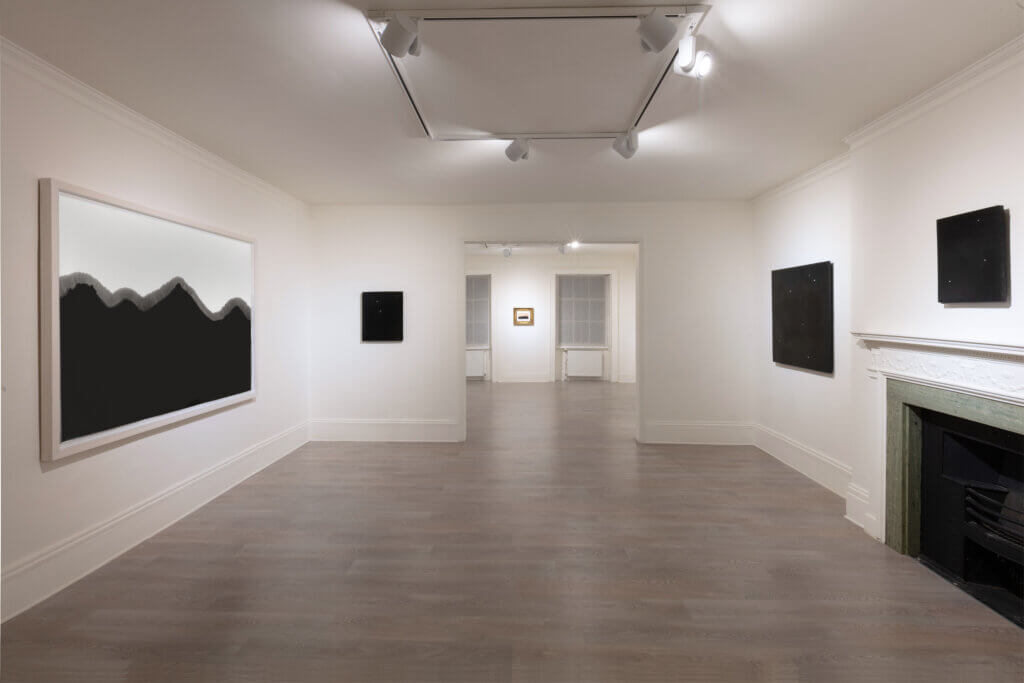
Q: What was the first work of art you created that cemented your path as an artist?
Paolo Canevari: I guess my first exhibition at the Galleria Stefania Miscetti in Rome in 1991. That was the first step for me in the art world. I was 28 years old and I exhibited the series of works entitled: Camera d’Aria. Works that in this period are currently exhibited in my solo show Self-portrait / Autoritratto at the Cardi Gallery, London in Mayfair.
Q: After exhibiting all over the world, what was your most memorable exhibition and why.
Paolo Canevari: My retrospective exhibition “Nobody Knows” in 2010, curated by Germano Celant, who recently passed away, at the Center for Contemporary Art L. Pecci in Prato.
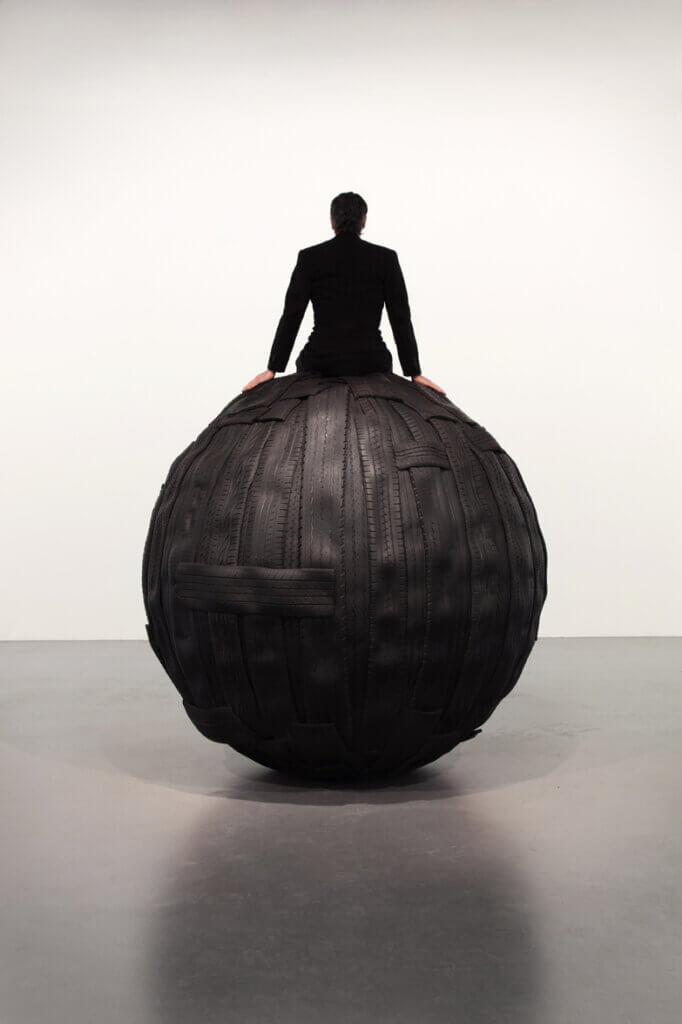
Q: What is your favorite piece from your body of work, and why?
Paolo Canevari: Probably it’s the video: Bouncing Skull from 2007, which was exhibited at the Venice Biennale curated by Robert Storr the same year. The video had a very simple execution: the camera was placed on the ground and the video was shot with a single take only once without interruptions or editing and post-productions. I use the video medium in the simplest and most elementary way, my videos are like paintings, there is not really a time-based narrative: you can see the image for ten seconds or ten minutes and the message does not change. Bouncing Skull is the shot of a 12-14 year old boy playing with what looks like a soccer ball, making it bounce and dribble skilfully, like an impromptu and fascinating choreography. But the ball, upon closer inspection, is a human skull.
I love this work which contains a lot of my research and what I conceptually want to express. The video was shot in Belgrade inside the ruins of a building: the former Serbian defence ministry. The site was bombed in 1999 during the NATO air operation “Allied Forces” in which thirteen NATO member countries took part, including Italy. I imagined Bouncing Skull in a taxi in Belgrade passing the ruins of the bombed-out building. I had imagined a child playing football with a skull in front of those buildings that have become a monument to the failure of a society.
Q: What do you think about the current state of the art world?
Paolo Canevari: The link that galleries and curators have with power and economic interests is exasperated. The key players influence the work of artists through a judgment system that is no longer about the quality of the work, but its easy absorption and its sensationalism. In addition today’s art collectors live in a conflict of interest with their roles as trustees of museums and institutions. I also think that the easy ideology of the politically correct, in recent years, has negatively influenced the art world, specifically in lowering the quality of art in favour of the mainstream
Q: What role does the artist play in society?
Paolo Canevari: The answer for me is to paraphrase a statement by the Italian writer and intellectual Alberto Moravia, “The role of the artist in society is to be antisocial”.
Q: Which artists have caught your attention in the past five years?
Paolo Canevari: The artists who have my attention and who amaze me every day are my students from the Academy of Fine Arts in Rome. They are the ones I see grow and become independent artists who are aware of their role in the world.
https://www.instagram.com/paolo_canevari/
©2021 Paolo Canevari, Cardi Gallery, Angelo Cricchi


